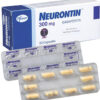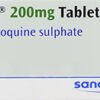Medication Overview: Plaquenil
Plaquenil, chemically known as hydroxychloroquine, is an antimalarial medication that has proven effective in the treatment of autoimmune diseases. This oral medication is primarily used for conditions like rheumatoid arthritis and lupus erythematosus. As a disease-modifying antirheumatic drug (DMARD), it helps in reducing symptoms such as swelling, pain, and joint stiffness. Additionally, hydroxychloroquine is used as a prophylactic treatment against malaria. It is available in tablet form, generally administered by healthcare professionals based on specific patient needs and conditions.
Dosage and Administration
The recommended dosage of Plaquenil varies according to the condition being treated. Usually, for rheumatoid arthritis, the standard dose is 200 to 400 mg daily, which is adjusted based on patient response. For lupus erythematosus, similar dosages apply, whereas malaria prophylaxis often requires a lower systemic dosage. It is typically advised to take Plaquenil with food or milk to minimize gastrointestinal concerns. The adjustment in dosage might be required for patients with renal or hepatic impairment. Consistency in administering the medication at the same time daily optimizes therapeutic outcomes.
Pharmacokinetics and Absorption
Plaquenil exhibits a well-absorbed oral administration profile, with bioavailability reaching approximately 70-80%. The peak plasma concentrations are observed 3-4 hours post-ingestion. It extensively binds to plasma proteins, ensuring sustained delivery to target sites. Hepatic metabolism plays a crucial role in its breakdown, and it predominantly undergoes renal excretion. A long elimination half-life of up to 45 days contributes to prolonged therapeutic effects, making it particularly beneficial for chronic conditions.
Mechanism of Action
Plaquenil’s mechanism involves the modulation of the immune response and reduction in inflammation. It inhibits pathways associated with antigen presentation and cytokine production. Crucially, it increases the pH of intracellular vacuoles, disrupting cellular processes essential for immune cell communication. This multifaceted action is complemented by its ability to interfere with nucleic acid replication in plasmodia during malaria treatment. Hydroxychloroquine’s interaction with toll-like receptors further contributes to its effectiveness in autoimmune scenarios.
Potential Side Effects
Common side effects associated with Plaquenil include gastrointestinal disturbances like nausea, vomiting, and diarrhea. Retina damage is a rare but critical adverse effect, necessitating regular ophthalmologic evaluations. Additional potential reactions include skin rashes, headache, dizziness, and muscle weakness. Long-term use may lead to cardiomyopathy, a condition affecting heart muscles. A detailed discussion with healthcare providers is crucial to managing any emerging side effects effectively.
Drug Interactions
Hydroxychloroquine interacts with various medications, which can alter its therapeutic efficacy. Concurrent use with digoxin may result in elevated plasma levels of the latter, requiring careful monitoring. Co-administration with methotrexate in rheumatoid arthritis treatments can enhance hepatotoxic effects. Plaquenil also impacts the absorption of antacids and should be spaced appropriately. QT interval prolongation is a risk when used alongside other QT-prolonging drugs. Physicians need to take comprehensive patient histories to assess potential interactions.
Suitable Patient Populations
Plaquenil is primarily prescribed for adults with rheumatoid arthritis, systemic lupus erythematosus, and malaria prophylaxis. Its use in pediatric populations requires careful adjustment and consideration, often reserved for malaria treatment given weight-based dosages. Senior patients and those with comorbid conditions should be evaluated for liver and kidney function to tailor an appropriate dosage regimen. For pregnant and breastfeeding women, healthcare providers weigh potential benefits against risks to the fetus or infant.
General Storage Guidelines
Proper storage conditions for Plaquenil involve keeping it at room temperature, between 20-25°C (68-77°F), away from moisture and light. The medication should be stored in its original packaging, ensuring the container is tightly sealed to maintain potency. Access should be restricted to avoid accidental ingestion by children. Discarding expired or unused medication must follow pharmaceutical waste protocols or local guidelines, preventing potential environmental impacts and ensuring safety.








Reviews
There are no reviews yet.